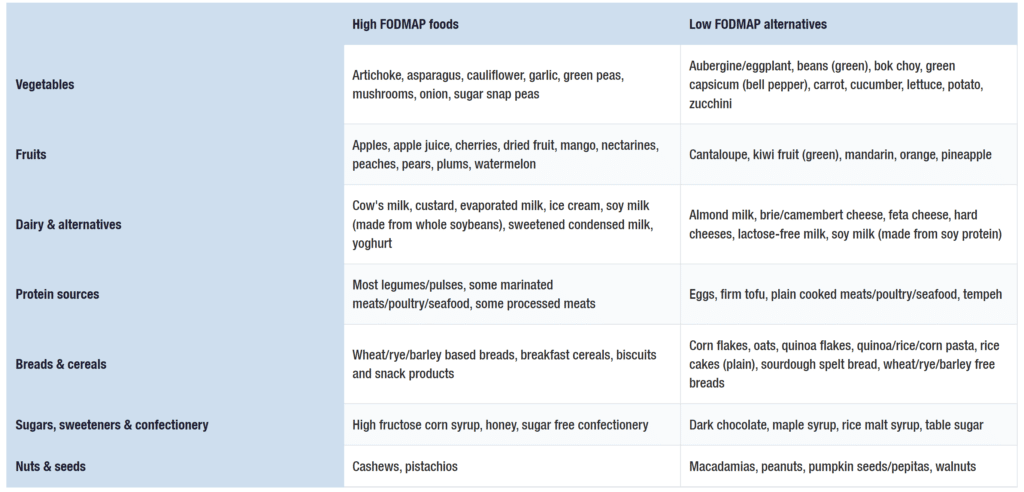The low-FODMAP diet is used to relieve symptoms of irritable bowel syndrome (IBS). The diet can be used in the short and long term, depending on needs.
A low-FODMAP diet may also be used in the initial stages of management and treatment for small intestinal bacterial overgrowth (SIBO).
What are FODMAPs?
FODMAPs are a collection of sugars that are not properly absorbed in the small intestine, so travel through to the large intestine where there are loads of bacteria ready to eat it, and produce gas as a result.
These misplaced sugars cause the intestine to expand and cause discomfort, gas, bloating and diarrhoea or constipation – the hallmarks of IBS.
FODMAPs are found in many foods, including fruit and vegetables. Not everyone is sensitive to the same FODMAPs.
Fermentable
Process through which digestive bacteria ferment undigested carbohydrates to produce gases.
Oligosaccharides
Fructans & GOS, found in wheat, rye, onions, garlic and legumes/pulses.
Disaccharides
Lactose, found in dairy – milk, soft cheeses and yoghurt.
Monosaccharides
Fructose, found in honey, apples, high fructose corn syrups, etc.
Polyols
Sorbitol and mannitol, found in some fruit and vegetables and used as artificial sweeteners.
The low-FODMAP diet
For the full list of the latest foods, see the Monash University FODMAP app. Monash University discovered FODMAPs and has the master list and tests foods regularly to declare them FODMAP friendly. The list is ever expanding and includes international foods.
There are a lot of resources online but Monash’s are reliable and the app is very good. It has recipes and a long list of foods ranked using a traffic light system including amounts of foods that are usually tolerated (or not).
Beware of recipes online – they often contain FODMAPs because the recipe author can tolerate them, and they are not strict.
You Won’t Starve is a growing low-FODMAP recipe resource that is strictly low-FODMAP and largely dairy-free, with a searchable table of foods.

Get a fresh perspective with a qualified, experienced vulvovaginal specialist naturopath.
This product has multiple variants. The options may be chosen on the product pageThe most comprehensive vaginal microbiome test you can take at home, brought to you by world-leading vaginal microbiome scientists at Juno Bio.
Easy-to-use BV and AV treatment program.
Promote and support a protective vaginal microbiome with tailored probiotic species.





